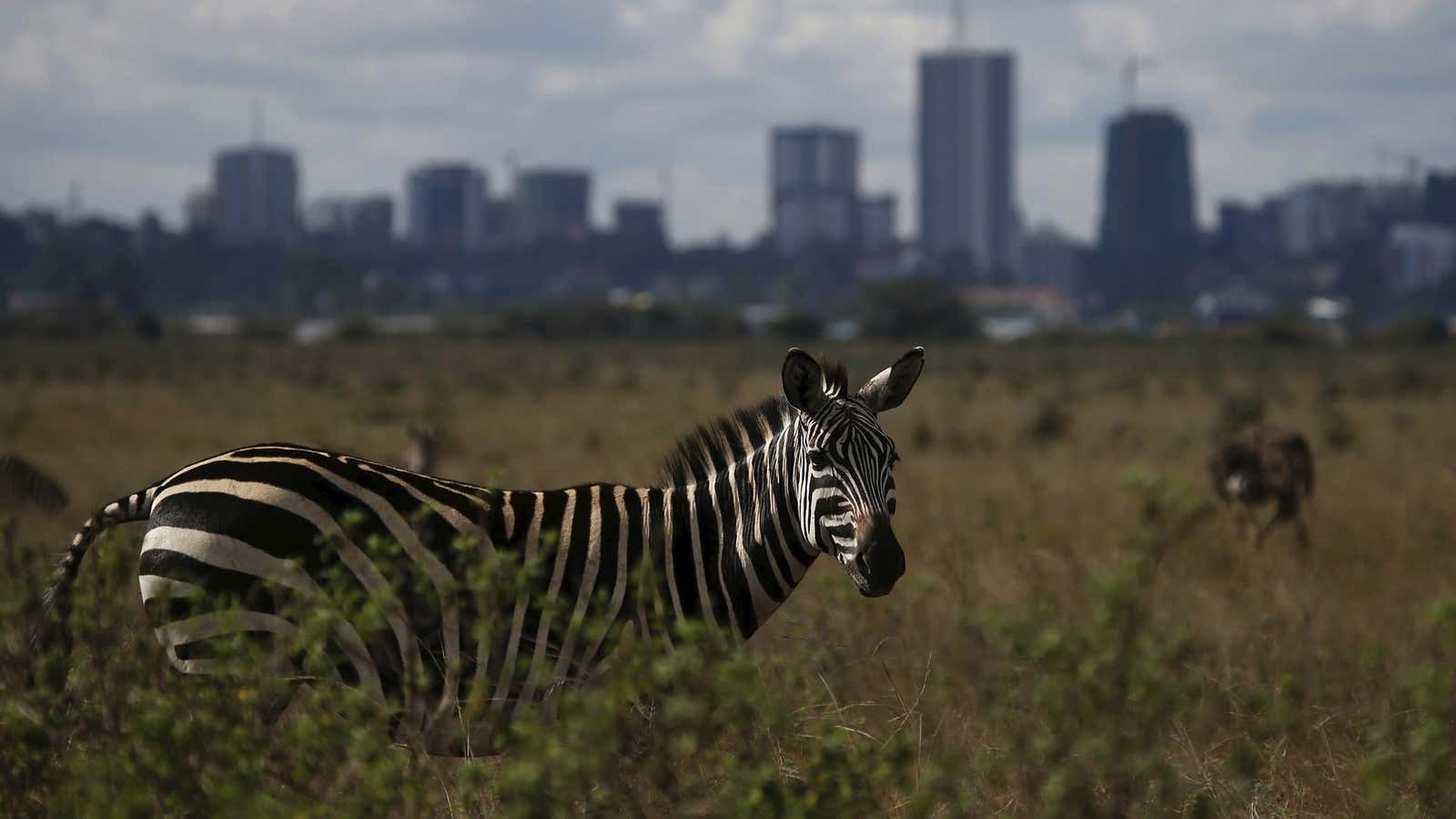A Chinese-funded multi-billion dollar rail link between Kenya’s capital and the port city of Mombasa will cut through Nairobi’s national park for wildlife, according to officials.
After months of back and forth, officials agreed late last week to allow 11km of track to pass through Nairobi National Park, a 117 square kilometer (45 square-mile) swathe of land in the south of the city, home to zebras, giraffes, leopards, cheetahs, lions and other animals. Parts of the track will be elevated and walled off, while an underpass will be built for animals and tourists. Fencing will be built to protect animals from the railway, believed to be the country’s largest infrastructure project since independence.
“I think it’s a pragmatic alternative, which this country needs,” said Richard Leakey, the renowned conservationist who is chairman of the Kenyan Wildlife Service. The alternative route for the $13.8 billion standard gauge railway (better known as just SGR) being built by the state-owned China Road and Bridge Corporation would have been to pass through industrial and residential areas of Mlolongo and the Athi River.
The project has been the focus of criticism ranging from conservation concerns to allegations of corruption in the tendering process—critics say Nairobi never held a competitive bidding process. Local cement producers have protested the fact that the Chinese company is importing cement.
Conservationists are worried about the encroachment on one of the region’s few national parks located within a capital city. “The proposed realignment of the [SGR] within the Nairobi National Park is likely to lead to increased trophy and bush meat poaching,” an environmental assessment of the project concluded in May.
The nearly 500 km railway, to replace the so-called “Lunatic Express” built in 1901, is expected to cut the current eight-hour journey between Mombasa and Nairobi in half and reduce travel time for freight trains to eight hours from as long as 36 hours. Eventually it is to link Kenya to Uganda, Rwanda, and South Sudan.
